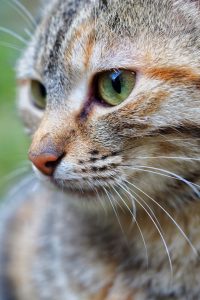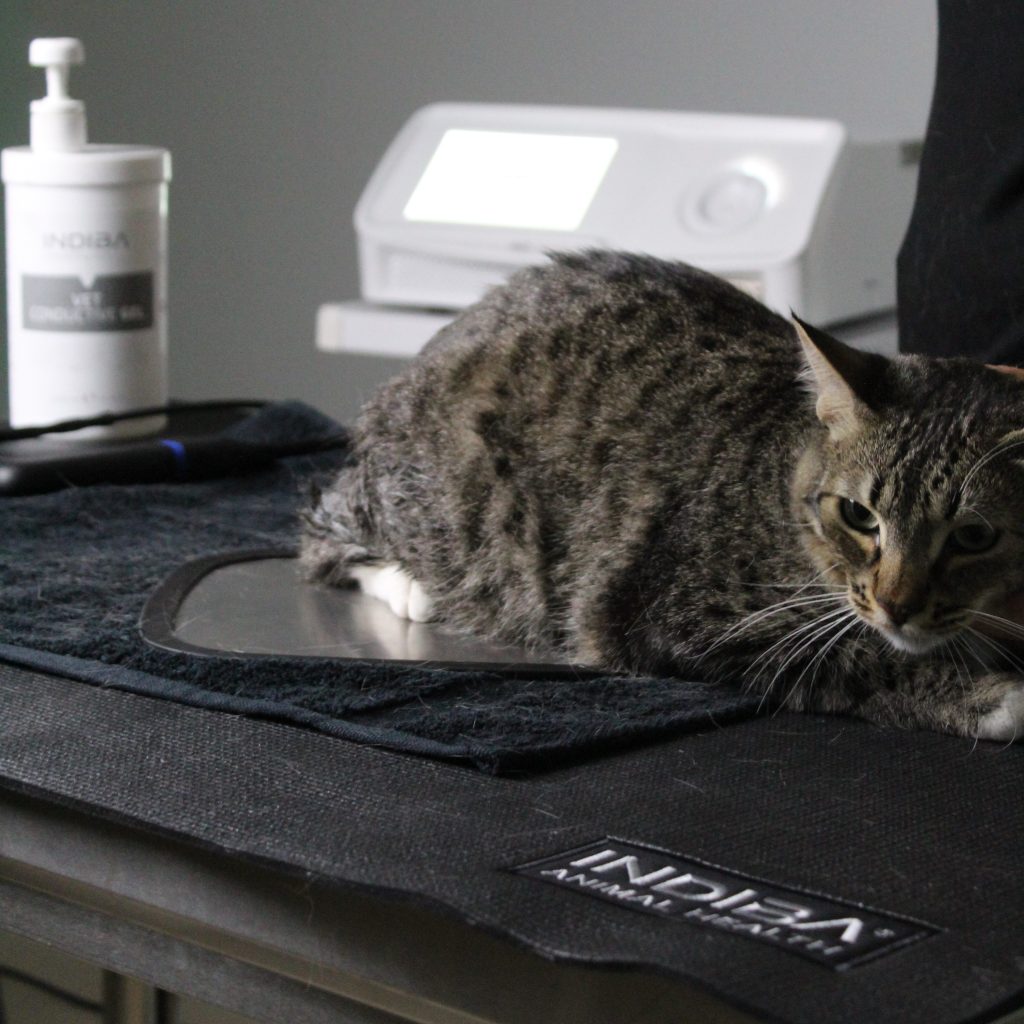Physiotherapy for Cats: Enhancing Feline Wellbeing with INDIBA’s Radiofrequency
Published:16 August,2023
Marina Rodriguez Alonso | Veterinarian, Equine Physiotherapist | Global Brand Manager INDIBA Animal Health
In many developed countries, the feline population thrives, yet remarkably, the awareness surrounding their health and well-being remains alarmingly low. Astonishingly, the realm of physiotherapy often remains overlooked as a viable treatment avenue for these beloved companions. Contrary to this oversight, cats, like their canine counterparts, struggle with an array of musculoskeletal challenges, injuries, and post-operative convalescence that can be effectively addressed through physiotherapy.
Consider, for instance, a comprehensive study involving 100 cats, where a staggering 61% exhibited signs of osteoarthritis (OA) in at least one joint, while 48% experienced this ailment in multiple joints1. This revelation unveils the prevalent radiographic presence of OA among aging cats, reaching up to a substantial 90% in their appendicular joints2.
Crafting a holistic approach to feline well-being stands as a paramount objective within the realm of healthcare. This multifaceted strategy strives to enhance their mobility, alleviate pain, and enrich their overall quality of life. In this pursuit, an innovative marvel has emerged within the domain of veterinary physiotherapy – the spotlight rests on INDIBA’s pioneering radiofrequency therapy.

“61% exhibited signs of osteoarthritis (OA) in at least one joint, while 48% experienced this ailment in multiple joints”
When can physiotherapy be used?
Physiotherapy can be employed in various situations:
Orthopedic issues: fractures, joint problems, and ligament injuries can benefit from physiotherapy to regain strength and range of motion. One perfect example is the management of osteoarthritis, especially in cats that refuse to take certain medicines, or these are contraindicated in cases where the cat suffers from other systemic pathologies (e.g. chronic kidney disease).
Neurological conditions: cats with neurological issues such as paralysis or nerve damage can improve their muscle control and coordination through targeted exercises.
Post-surgery: being active and adventurous, cats often suffer dangerous falls and accidents, which lead to repair surgery. Rehabilitation protocols are key for these patients to recover their mobility and activity, taking them back to a good quality of life.
Chronic pain management: as mentioned previously, some cats are not eligible for certain medicines, especially in the long term. Chronic conditions like arthritis and degenerative joint diseases can be better managed with physiotherapy to reduce pain and enhance mobility.
Benefits of INDIBA’s radiofrequency therapy
INDIBA’s radiofrequency therapy has emerged as a promising technique in veterinary physiotherapy and rehabilitation. It involves the application of electromagnetic waves to the affected area, promoting tissue healing and regeneration. In the context of feline physiotherapy, here are the benefits of using INDIBA’s radiofrequency:
- Non-invasive: radiofrequency therapy is non-surgical and non-invasive, making it suitable for cats who might not tolerate more intrusive treatments, such as surgery, regular injections or techniques that involve difficult manipulation.
- Enhanced blood circulation: the therapy stimulates blood flow, promoting nutrient delivery and waste removal, which aids in tissue healing.
- Pain relief: radiofrequency therapy can help alleviate pain by targeting pain receptors and promoting the release of endorphins, the body’s natural painkillers.
- Reduced inflammation: by improving circulation and cellular activity, radiofrequency therapy reduces inflammation and swelling around injured areas.
- Faster recovery: when incorporated into a comprehensive physiotherapy plan, INDIBA’s radiofrequency therapy can accelerate healing and overall recovery time for feline patients.

In conclusion, physiotherapy is a valuable tool for enhancing the health and well-being of cats, addressing a range of conditions and improving their quality of life. INDIBA’s radiofrequency therapy, with its non-invasive nature and multiple benefits, holds promise in providing effective and efficient treatment options for feline patients in need of physiotherapy interventions.
IMPORTANT: All diagnostics and treatments of injuries and diseases in animals must be done by an animal health professional.
Do you want to try INDIBA?
Contact a Product Expert
Sources:
- Slingerland L., et al. 2011. Cross-sectional study of the prevalence and clinical features of osteoarthritis in 100 cats.
- Kerwin, S. 2010. Osteoarthritis in cats.
Related content: